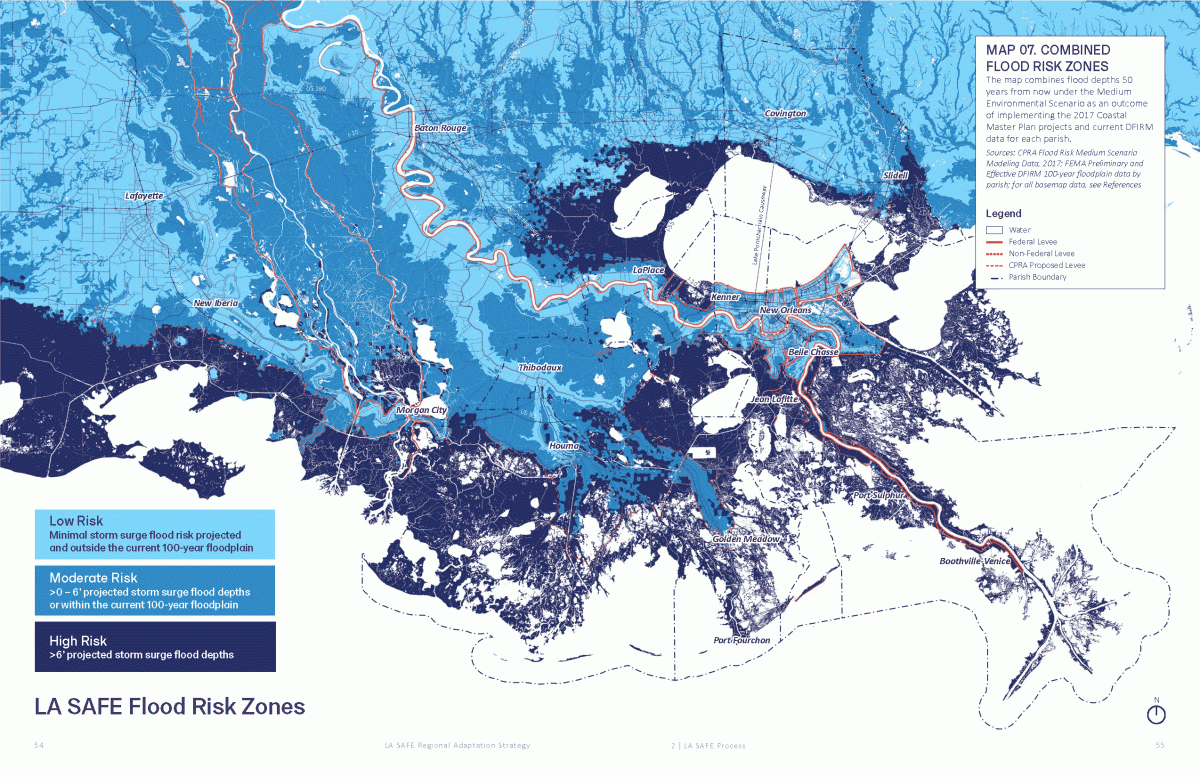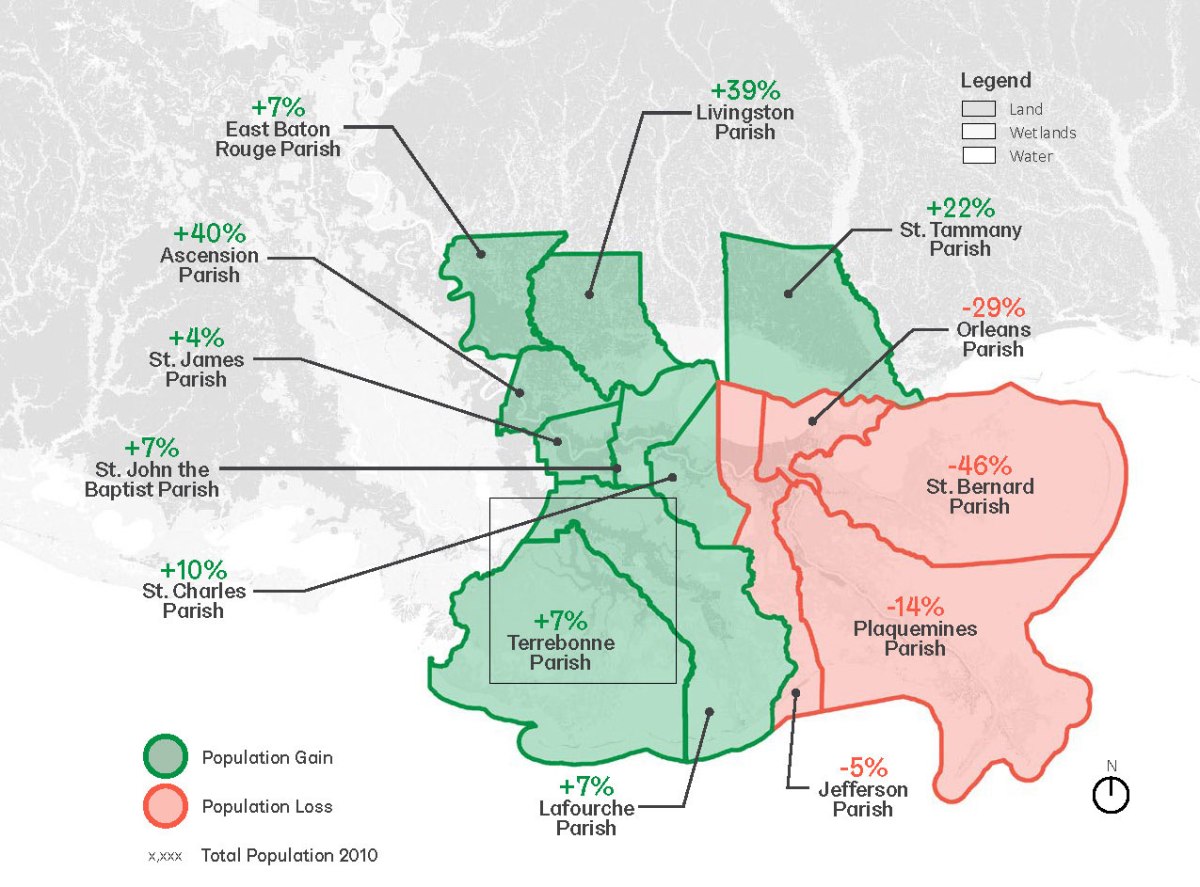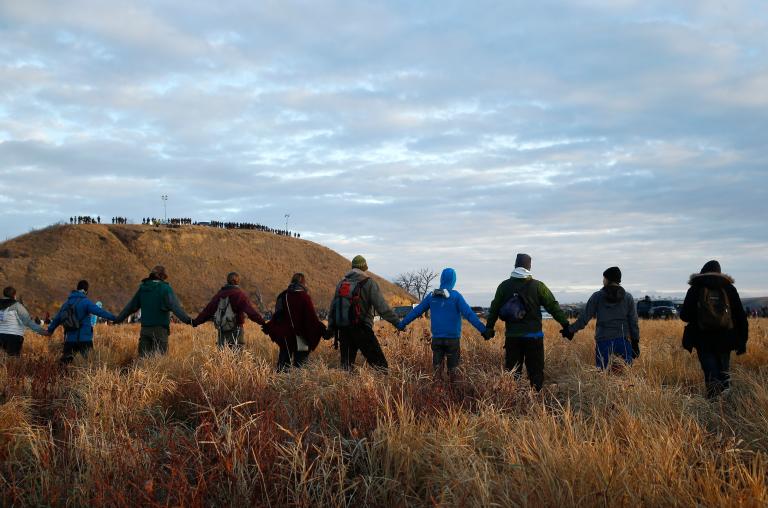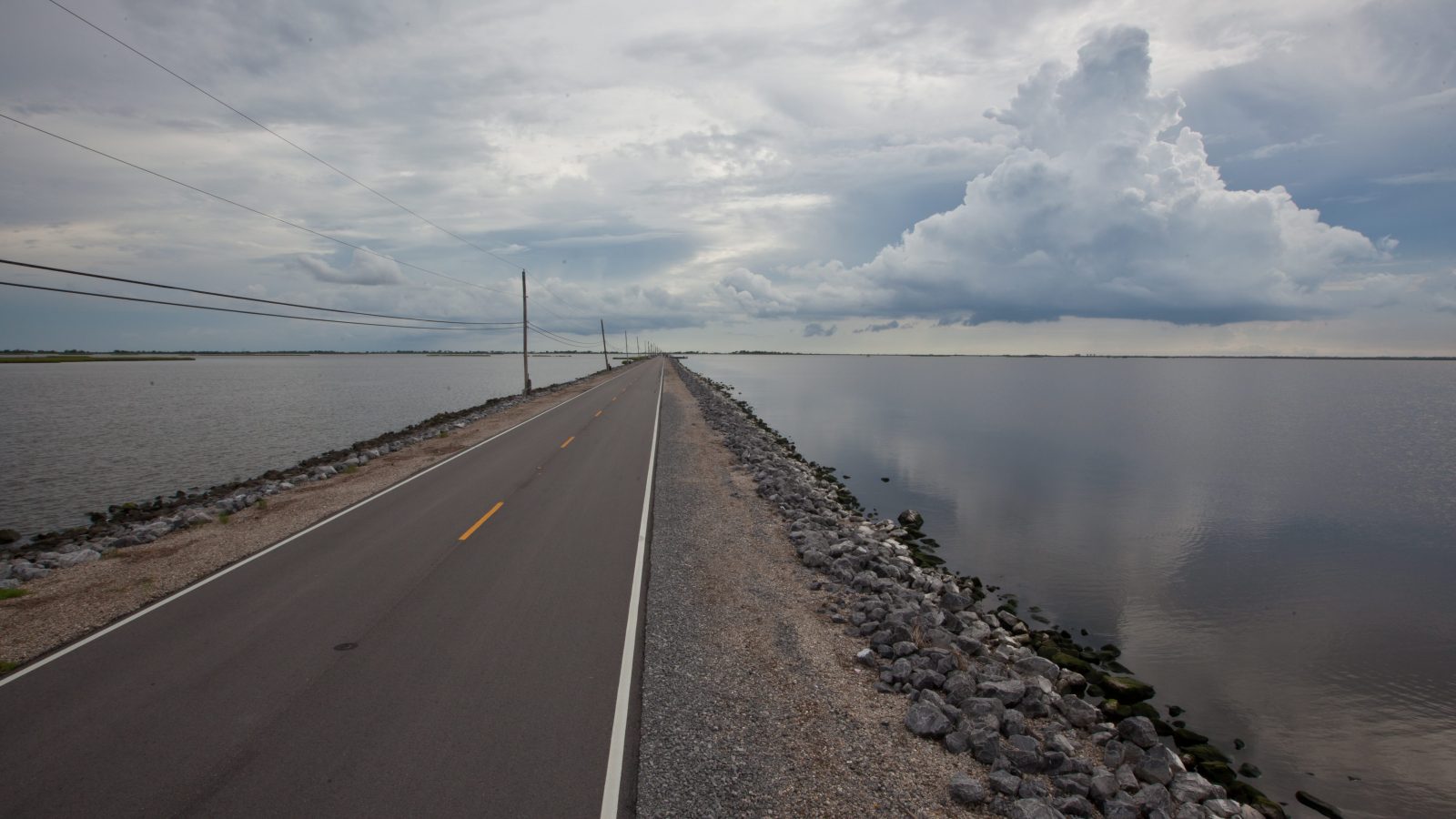The most flood-prone state in the U.S. is taking strides to stay dry. Louisiana recently came out with a policy recommendations for adjusting in the face of climate change.
In 2005, Hurricane Katrina left almost 2,000 dead and caused over $100 billion in damages. Every single one of Louisiana’s 64 parishes (counties) has since been listed in a federal major disaster declaration. Louisiana, of all states, has a lot to lose to climate change — not least of all the football field-sized piece of coastal land that washes away every hour and a half.
While the state released a Coastal Master Plan in 2017 that outlines efforts to protect Louisiana’s coasts, LA SAFE might be considered the master plan’s more down-to-earth, cynical cousin. In acknowledging that land is being — and will continue to be — lost, LA SAFE takes a look at six disaster-susceptible parishes and what residents might be able to do.

Flood risk in different parts of southeast Louisiana. The darker the blue, the higher the flood risk. LA SAFE
If you don’t have time to read the whole 204-page document, don’t worry — Grist’s got ya covered. Here’s four interesting ideas from the new plan:
- Address widespread climate migration: People are moving away en masse from high-risk areas. In the decade between 2000 and 2010, parishes that were hit hard by tropical storms have seen population reductions between 5 and 46 percent, while less-risky, “receiver” parishes saw increases between 4 and 40 percent. Residents that are unable to leave high-risk areas are struggling to manage rising insurance costs and poverty rates, while property values fall. LA SAFE proposes offering government-funded buyouts to coastal residents and informing disaster-prone areas of their nearest “receiver” communities.
- Ensure escape routes: Rising seas pose a big threat to evacuation routes. The new climate plan wants the state to assess major transportation pathways for disaster vulnerability to ensure that dependable routes are accessible, no matter if it’s high tide, low tide, or a hurricane.
- Protect coastal culture: Coastal wetlands are unique cultural hubs that many residents fear losing. As one coastal resident, Judge Stanwood Duval, is quoted in LA SAFE: “There’s a whole culture, a very fine culture, that’s interrelated and intertwined with the environment. We waited too long [to start saving it].” LA SAFE proposes means for cultural preservation, like amping up afterschool and summer programs, to help revitalize coastal practices.
- Diversify the economy with sustainable industries: As climate change threatens coastal land, it also threatens the economies upon which these communities are built. Fishing, oil, and gas industries are all considered “volatile” by LA SAFE. The plan suggests instead that southeast Louisiana grow its ecotourism, coastal restoration, renewable energy, digital media, and healthcare sectors to replace these potentially unreliable industries.

The green parishes experienced population gains while the red had population losses. LA SAFE
While LA SAFE isn’t a binding document, it does provide a holistic approach to all the moving parts Louisianians need to address in their impending fight against climate change. But maybe more importantly, it aims to get people thinking and talking about what global warming looks like in their backyards, on a day-to-day basis.
The authors of the plan conclude: “The LA SAFE Regional Strategy offers an initial reference of how we might make creative leaps, how we respect who we are while positioning ourselves for who we can become. We have this thinking within us and are now in a place where we have to make hard decisions that will have a major impact on Louisianians’ lives.”




